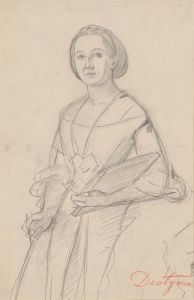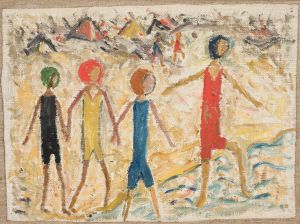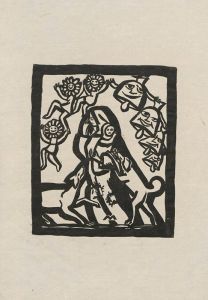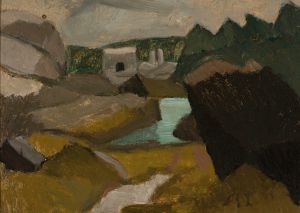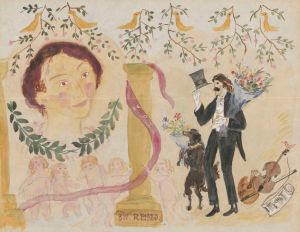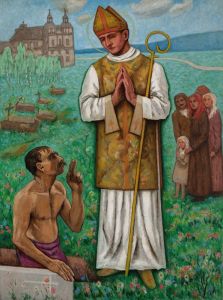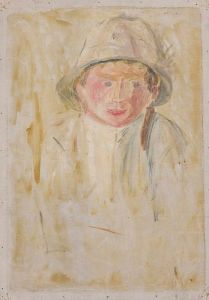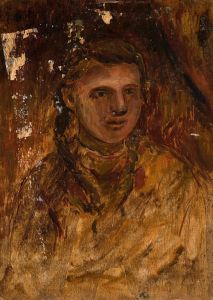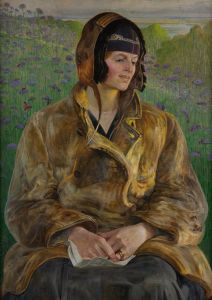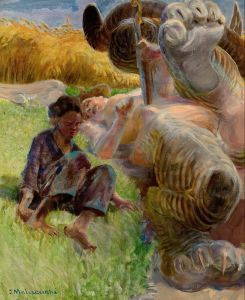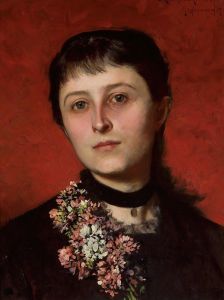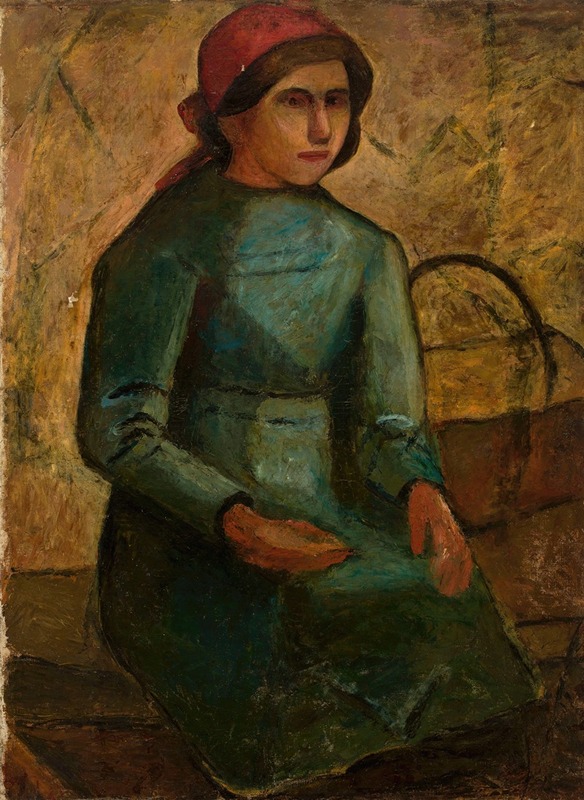
Dziewczyna w zielonej sukni z koszykiem
A hand-painted replica of Tadeusz Makowski’s masterpiece Dziewczyna w zielonej sukni z koszykiem, meticulously crafted by professional artists to capture the true essence of the original. Each piece is created with museum-quality canvas and rare mineral pigments, carefully painted by experienced artists with delicate brushstrokes and rich, layered colors to perfectly recreate the texture of the original artwork. Unlike machine-printed reproductions, this hand-painted version brings the painting to life, infused with the artist’s emotions and skill in every stroke. Whether for personal collection or home decoration, it instantly elevates the artistic atmosphere of any space.
Tadeusz Makowski was a Polish painter known for his unique style that combined elements of Post-Impressionism and Cubism. Born on January 29, 1882, in Oświęcim, Poland, Makowski initially studied classical philology at the Jagiellonian University in Kraków before pursuing art at the Academy of Fine Arts in Kraków. He studied under Józef Mehoffer and Jan Stanisławski, two prominent figures in Polish art. In 1908, Makowski moved to Paris, where he became part of the vibrant artistic community and was influenced by the avant-garde movements of the time.
"Dziewczyna w zielonej sukni z koszykiem" (translated as "Girl in a Green Dress with a Basket") is one of Makowski's works that exemplifies his distinctive approach to painting. While specific details about this particular painting are scarce, Makowski's oeuvre often featured children and rural scenes, rendered in a style that blended realism with a whimsical, almost fairy-tale quality. His work is characterized by a simplified form, a muted color palette, and a focus on the emotional and spiritual aspects of his subjects.
Makowski's time in Paris exposed him to various artistic influences, including the works of Paul Cézanne and the Cubists. However, he developed a personal style that was less about the fragmentation of form and more about capturing the essence of his subjects. His paintings often depict children, a theme that became central to his work after World War I. Makowski's children are not idealized; instead, they are portrayed with a sense of innocence and introspection, often set against simple, geometric backgrounds that emphasize their expressions and gestures.
The painting "Dziewczyna w zielonej sukni z koszykiem" likely reflects these characteristics, with the subject—a girl in a green dress—captured in a moment of quiet reflection or activity. The use of a basket as a prop may suggest themes of daily life or rural simplicity, common motifs in Makowski's work. The green dress could symbolize youth and vitality, aligning with Makowski's interest in the world of children and their unpretentious view of life.
Makowski's work gained recognition during his lifetime, and he exhibited in various salons and galleries in Paris. Despite his success abroad, he maintained strong ties to his Polish roots, and his work often reflects a blend of Polish and French artistic traditions. His paintings are noted for their poetic quality and the way they convey a sense of nostalgia and longing.
Tadeusz Makowski passed away on November 1, 1932, in Paris, leaving behind a legacy of work that continues to be celebrated for its unique blend of styles and its heartfelt portrayal of childhood and rural life. His paintings are held in various collections, including the National Museum in Warsaw and the Musée National d'Art Moderne in Paris.
While specific information about "Dziewczyna w zielonej sukni z koszykiem" is limited, it remains a part of Makowski's broader body of work that captures the simplicity and depth of human experience through the eyes of a child.






